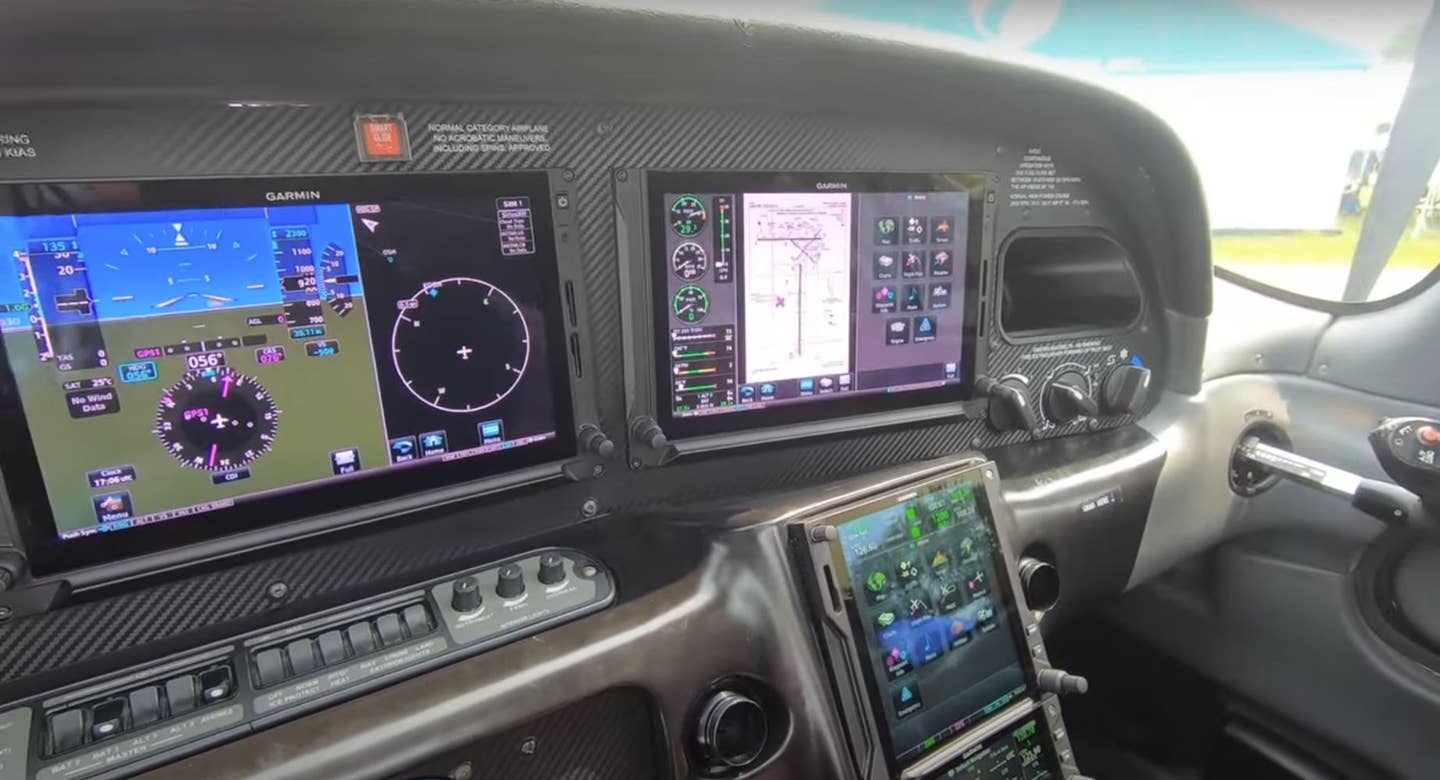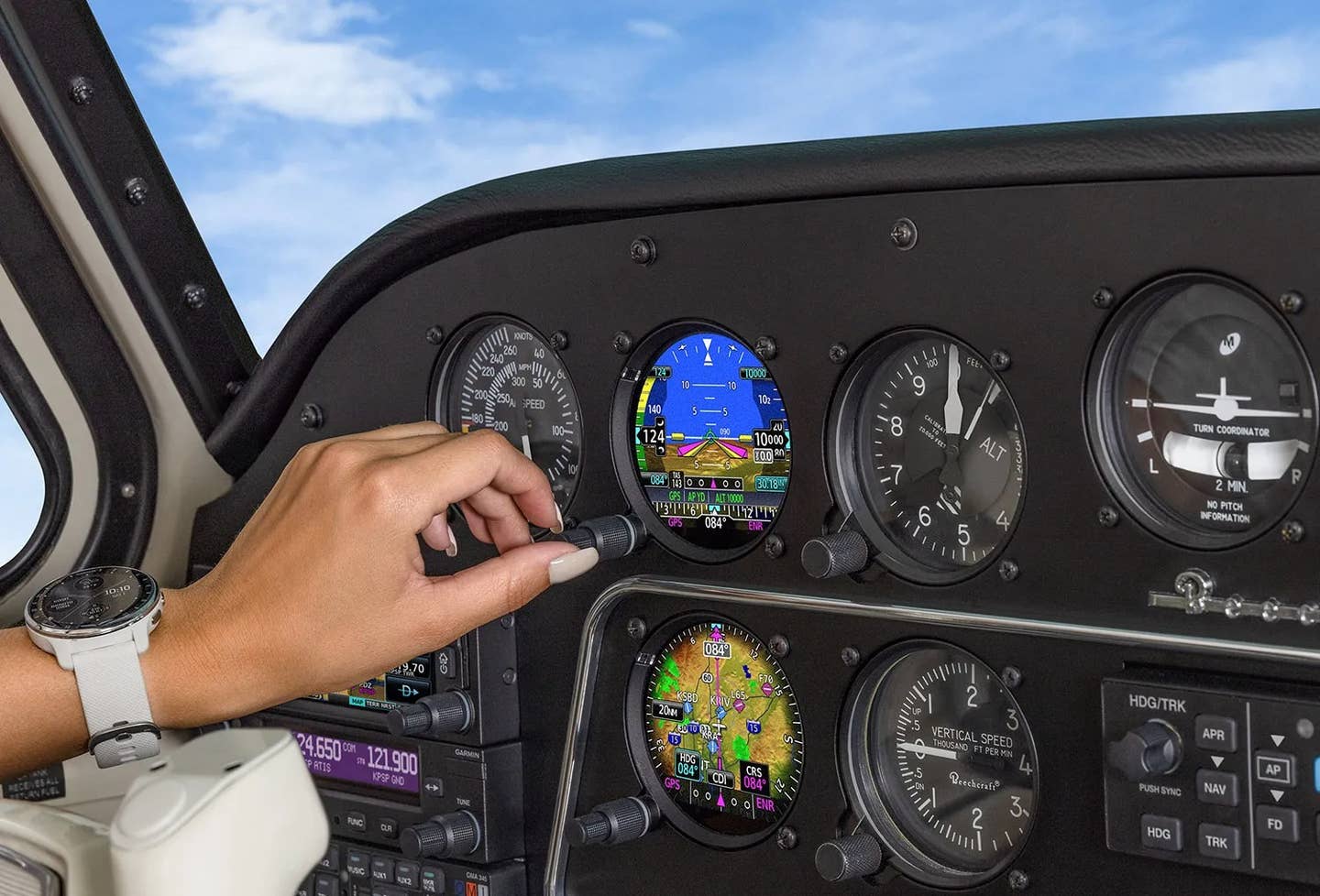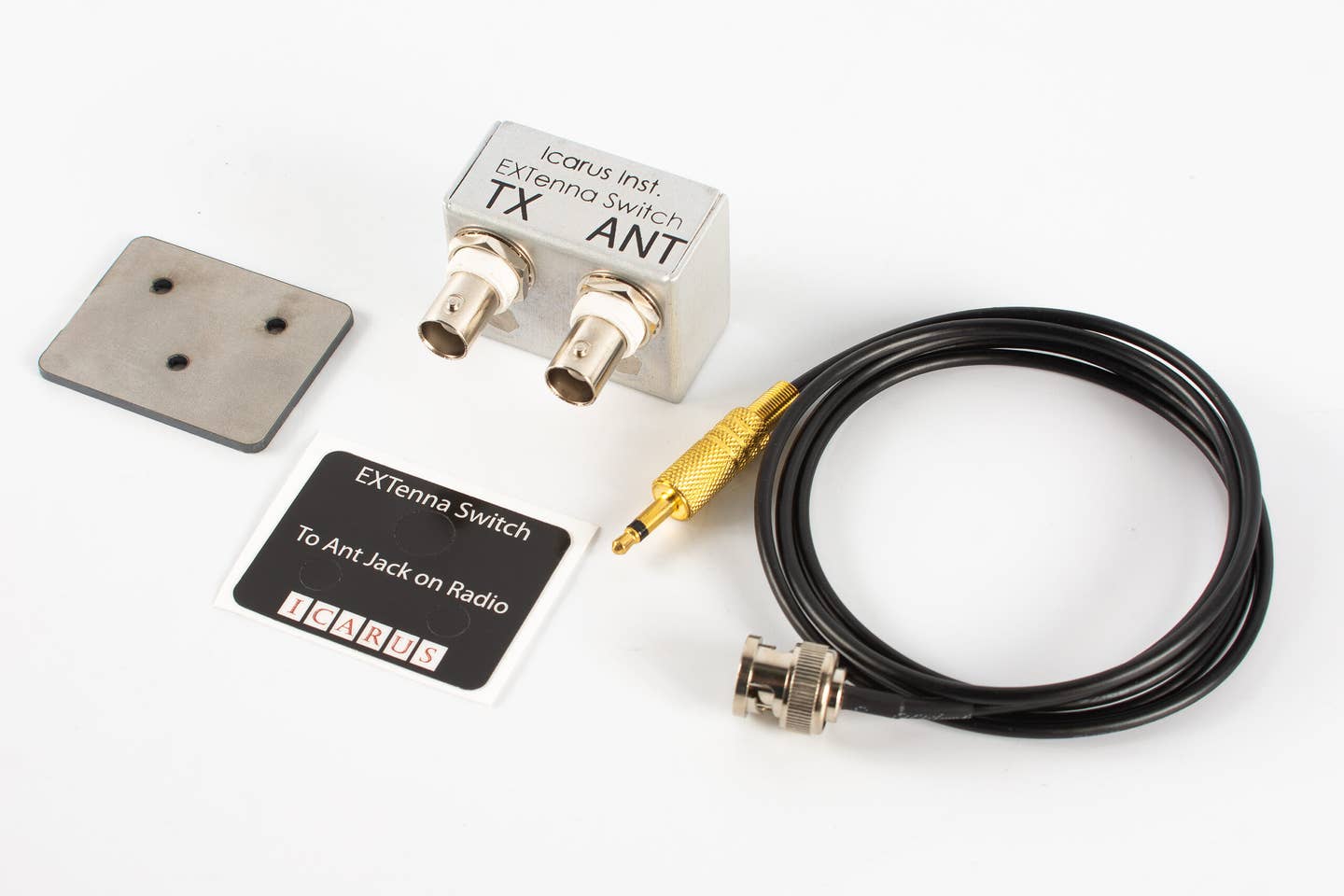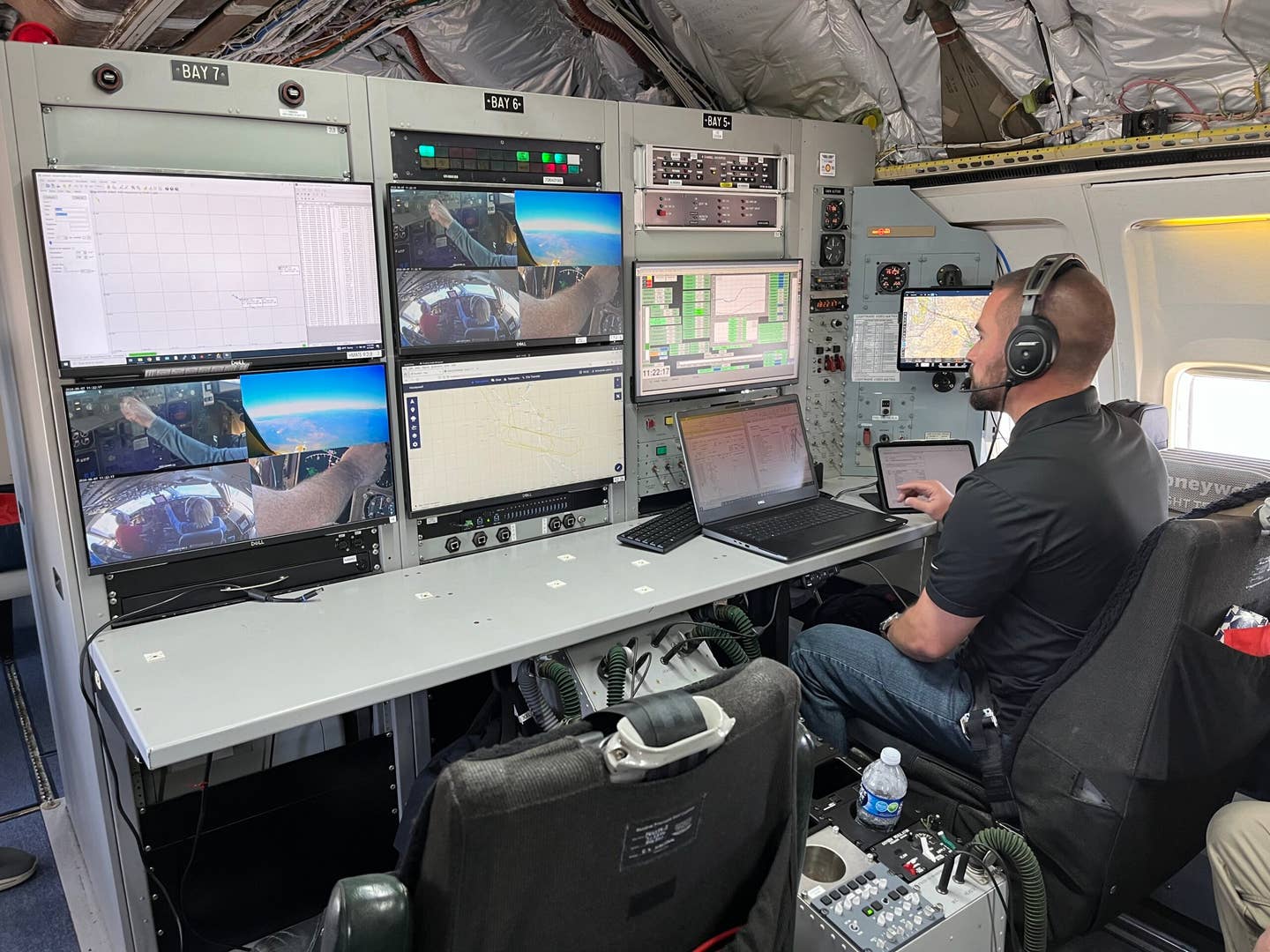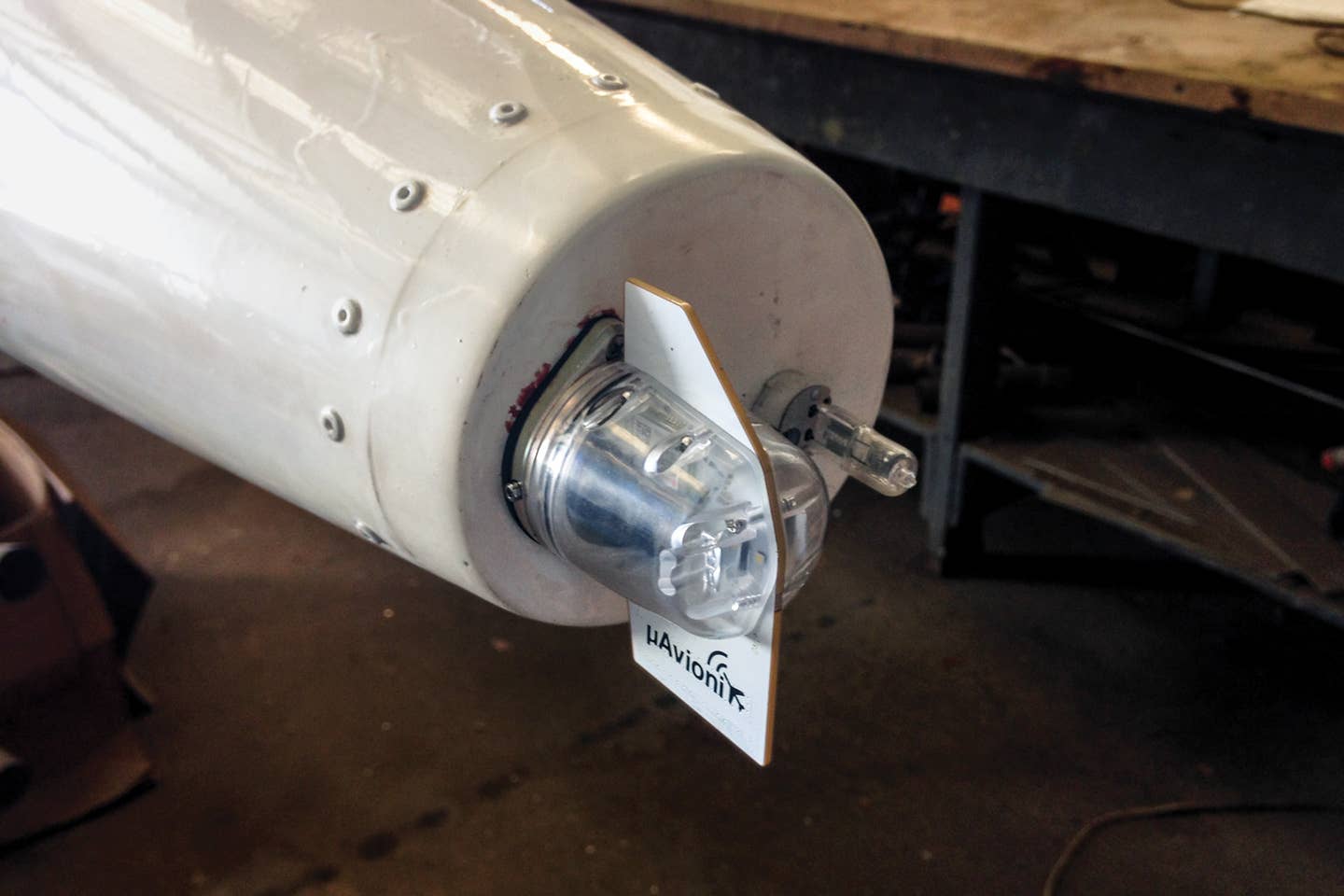
The tiny uAvionix tailBeacon ADS-B unit on my airplane. Peter Garrison
Between an inherent tendency to procrastinate, an expectation of lowering prices and a faint hope that the 2020 deadline would—like an affordable substitute for leaded avgas—quietly recede into the indefinite future, I did nothing about ADS-B Out until late this past year. By then, it appeared that the deadline was inexorable and the hoped-for $49.95 solution was not at hand. I began to consult Google for help.
Airplane ownership is incompatible with my job description of ink-stained wretch. Only because I built my airplane myself—having designed it on the backs of used sheets of paper and equipping it with an engine, instruments and avionics from another era (my airspeed indicator once graced a DC-4)—do I have an airplane at all.
Thus, frugality was of the essence.
A vast and world-altering edifice—advertising—has been erected upon the mental processes of shoppers, yet they remain mysterious. I will therefore not try to retrieve the sequence of steps that led me to a company impractically named uAvionix. For some time, I could not figure out how to pronounce its name. The initial u, if you looked closely at some versions of the logo, was really the Greek letter standing for “micro.” So was it “you-avionics,” as in YouTube—or “micro-avionics” or “mew-avionics” or “moo-avionics”?
Well, it didn’t matter. The important thing about this outfit was they offered a product that, at least in principle, required no modification of the aircraft wiring whatsoever. All you had to do was unscrew your tail nav light and screw on their gadget in its place. Unsurprisingly, it is called a tailBeacon. (They have a wingtip version as well, but I don’t use a standard wingtip nav-light mount.)
So I paid my $1,600 and, a couple of days later, received a tiny box. Inside was a sort of finned taillight under whose plastic lens nestled a high-intensity LED and a jewellike circuit board. This evidently contained an ADS-B transmitter, GPS, Wi-Fi receiver-transmitter and some mysterious mechanism for telepathically communicating with my existing transponder.
It took about 30 minutes to install.
Two questions immediately pop into the mind of anyone confronted with this gadget. One is: Won’t someone steal it? The other is: How does it synchronize with the existing transponder?
As far as the stealing part is concerned, it’s actually harder to remove than it is to install. And at any rate, it’s worthless to anyone else because to program it with the ID of another airplane, you have to know its Wi-Fi password.
To answer the other question, I located the patent application online. It turns out—I hope I have this right—that to discriminate between “own-ship” squawks and those of other nearby airplanes, it monitors the wire that delivers power to the taillight. This wire acts as an antenna, registering a faint echo of your own squawk, which the device isolates from the general noise. Other airplanes’ squawks are too faint to register. Very neat.
But would it work?
The way you find out is to make a 30-minute flight in ADS-B airspace. You then go to an FAA website and fill out a very brief “Public ADS-B Performance Report Request,” providing some information about your system and your assessment flight. Within a few minutes, an email comes to you with a multipage public ADS-B performance report. Functions that are outside acceptable limits are highlighted in red.
I had some red.
Read More by Peter Garrison: Technicalities
The next step was to go over to Van Nuys Airport (where my transponder would respond to interrogations while on the ground), adjust a parameter called “sensitivity” and repeat the test.
My next PAPR had less red, but it was not red-free.
A second trip to Van Nuys. A third PAPR. No change.
I spoke with a radio shop. The owner was of the opinion that uAvionix was optimistic in claiming that the device would work with any transponder. He thought the problem was undoubtedly my 45-year-old Narco AT-50A and offered to sell me an AT-150—old transponders are a drug on the market now that lots of people are putting in new ADS-B ones—for $250. It would just slide into the same rack with no hassle at all.
I bought it and slid it in. On my first takeoff, the tower saw only a primary return.
I sent back the AT-150. Now the radio guy offered me a Garmin 327, which he said was bound to work fine; so I gave him another $250. This was beginning to smart. For the Garmin, I had to make a new wire loom and install a new rack. At this point, I had wandered a long way from plug-and-play, but, to tell the truth, the installation was kind of fun.
I got a new PAPR. To my dismay, it was identical to the AT-50A one.
I finally noticed the small print at the bottom of some FAA page or other—I can’t even find it now—that said, in effect, “If you have an unsatisfactory PAPR, contact us before consulting a repair shop.” I did so and received this prompt and welcome reply: “It appears the error is only because of loss of ADS-B coverage due to low altitude, and your system is fine.”
So, Melmoth 2 had at last emerged from the Dark Ages of radar into the golden sunshine of NextGen.
I will never know whether the transponder change was even necessary; the system may have been just as fine with the AT-50A, which now sits forlorn on a shelf in my office, no doubt reminiscing about the time it sent a single heroic squawk 120 nm to Shemya, Alaska, after we had drifted off course in the mid-Pacific.
There were some downsides to my choice of which I was unaware when I made it. Because the tailBeacon is non-TSO, it did not qualify for the FAA’s $500 rebate. It is also a universal access transceiver rather than 1090ES, so it’s no good above 18,000 feet or outside the United States. These could prove to be significant constraints; the airplane is turbocharged, and Mexico, for instance, has the same ADS-B requirements as we do.
Because I avoided even thinking about ADS-B Out for so long, I only now became aware of its sociopolitical aspects. One person sees it as user fees’ foot in the door. Another worries that any infraction, however minor and inadvertent, will be recorded by a computer somewhere. I think that concern is unnecessarily dire. Although it can be readily proven from your times through gates on a toll road that you have been speeding, you don’t get computer-generated tickets. When the original transponder requirement came out, some alarmists saw it as the FAA trampling on the last remaining shred of our freedoms.
Generally speaking, there are the same concerns about privacy that people have about cellphones tracking their every move. The good thing about UAT devices, however, is that they can operate in “anonymous” mode, in which the airplane’s ID is disguised. It becomes, in effect, just a Mode C airplane squawking 1200. Flights in anonymous mode are not eligible for ATC services—other than takeoff from a controlled airport—but anonymous mode is automatically canceled if you select a code other than 1200.
It feels a little sleazy to be skulking around in the electronic equivalent of a fake beard, but I guess it’s better than everyone and his brother finding out what a rotten job I do of maintaining an exact altitude.

Subscribe to Our Newsletter
Get the latest FLYING stories delivered directly to your inbox

